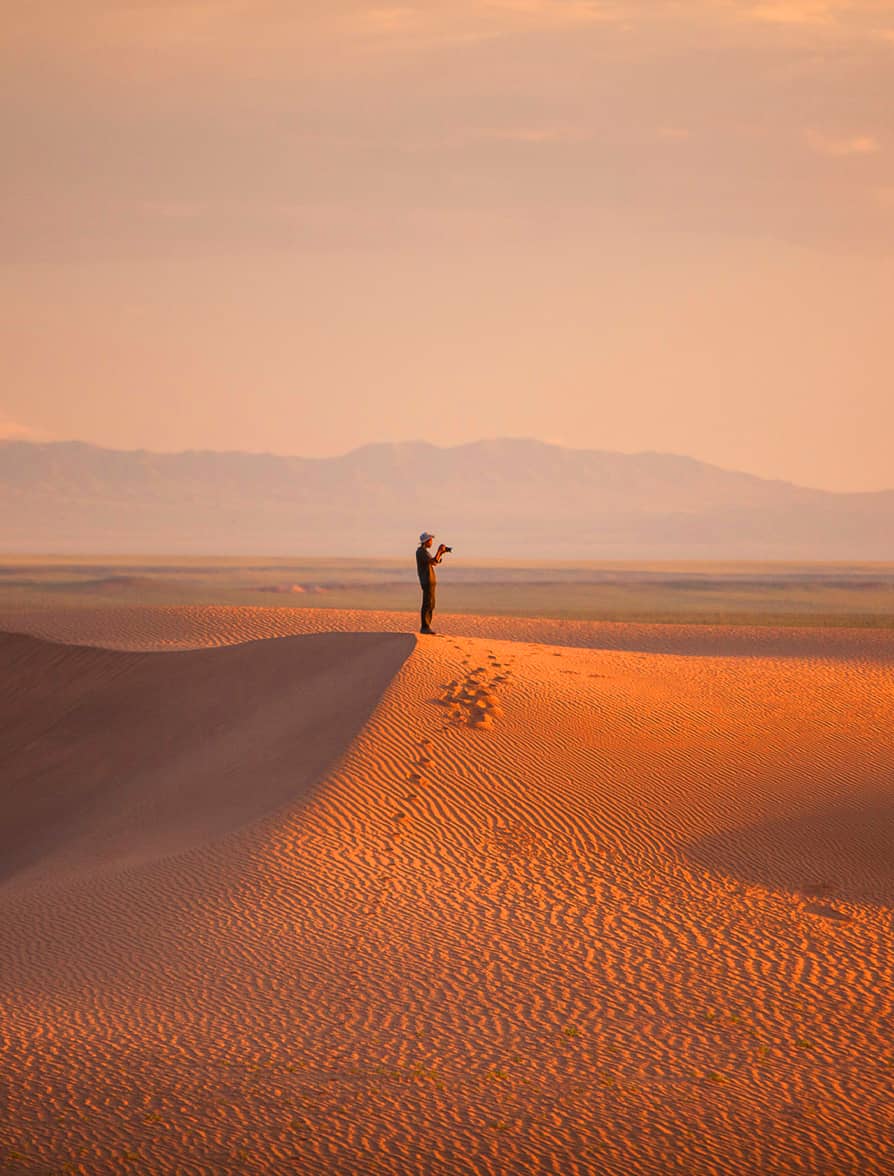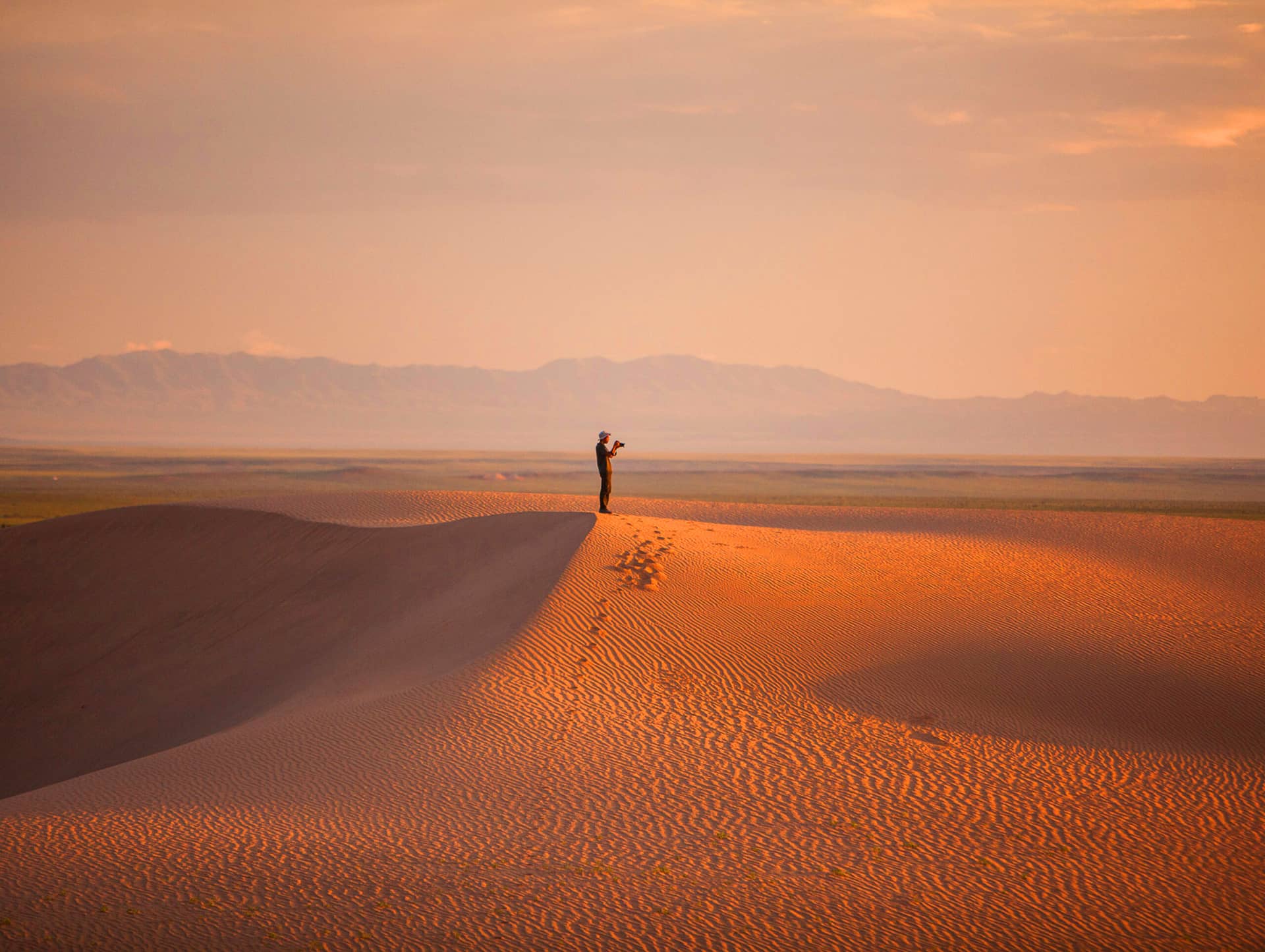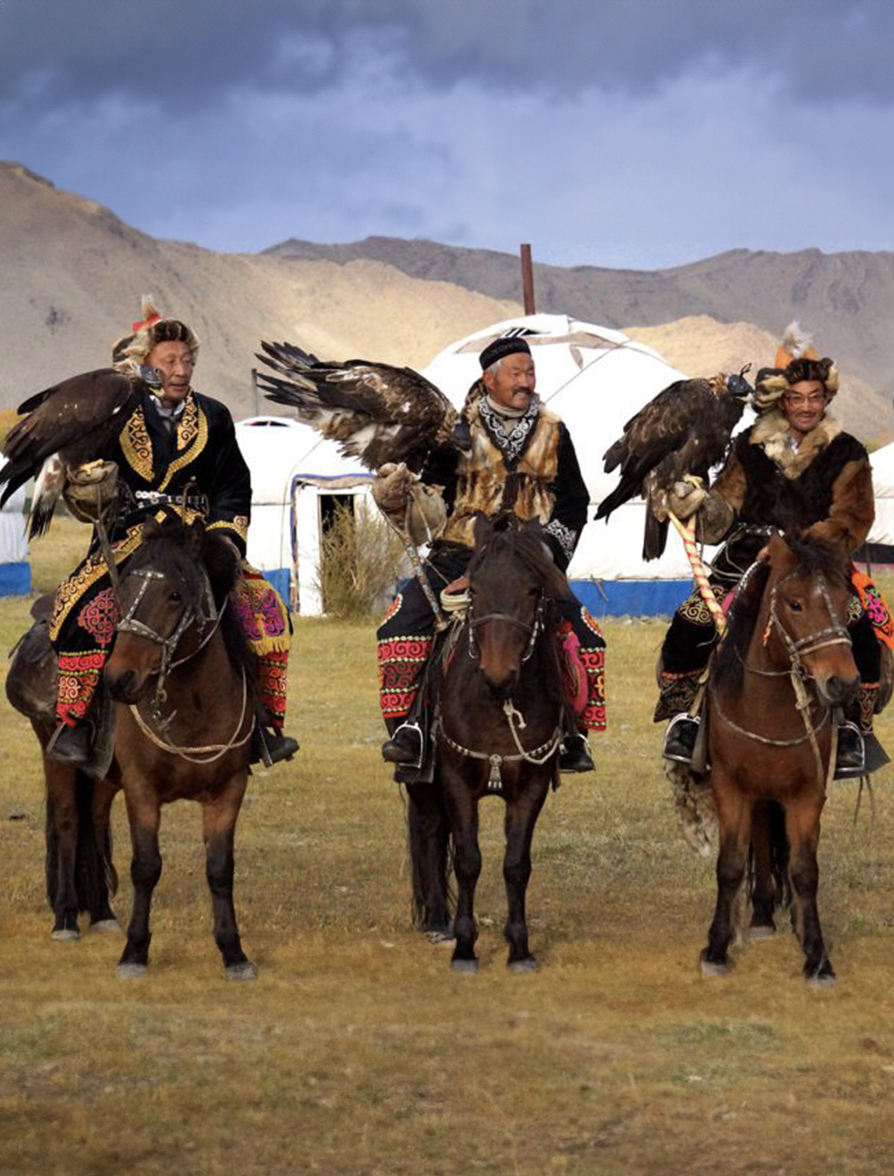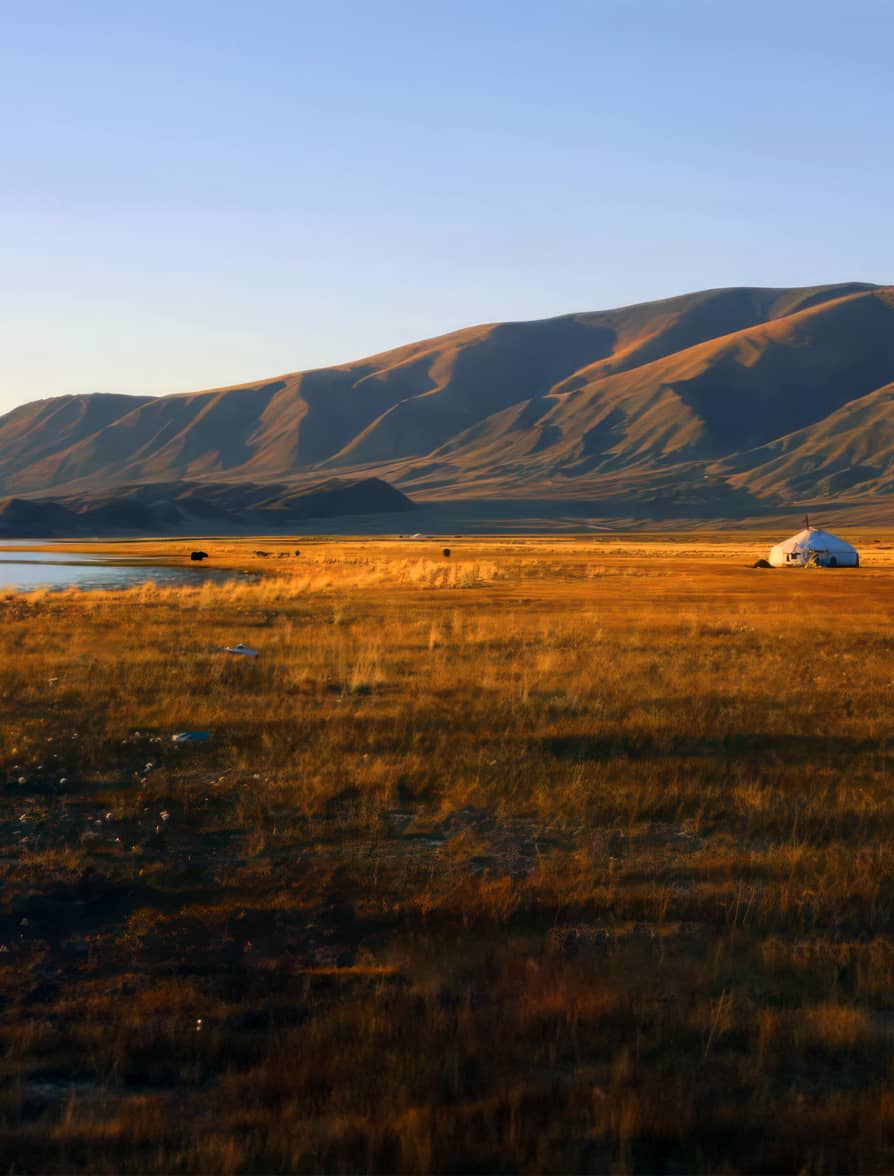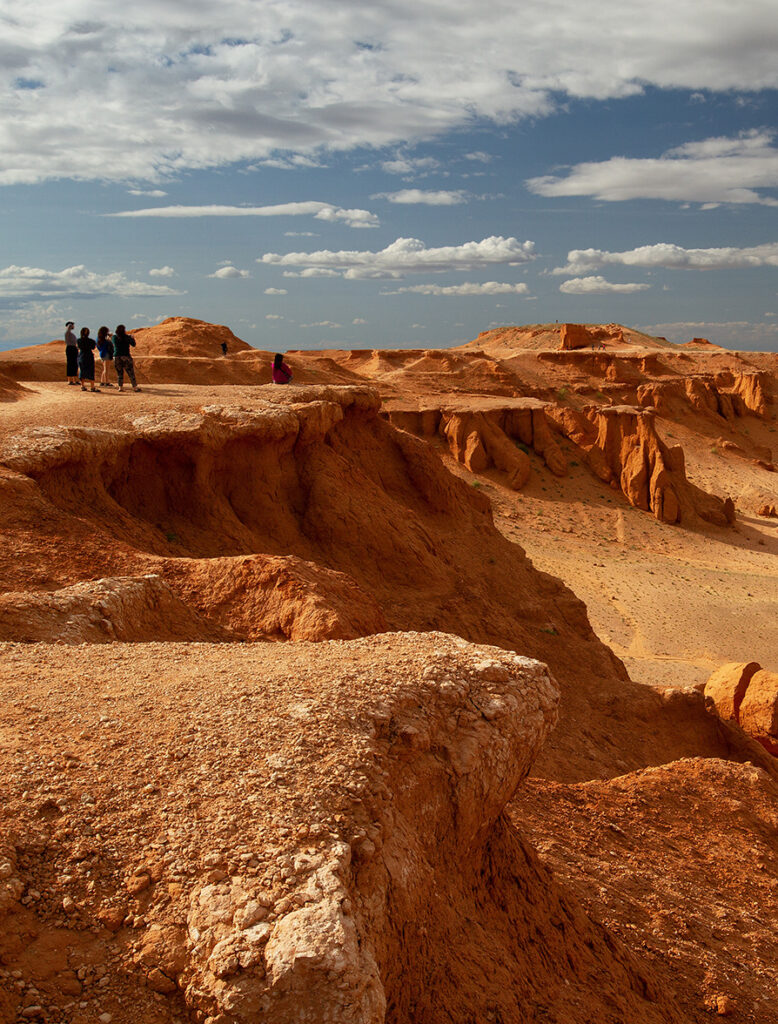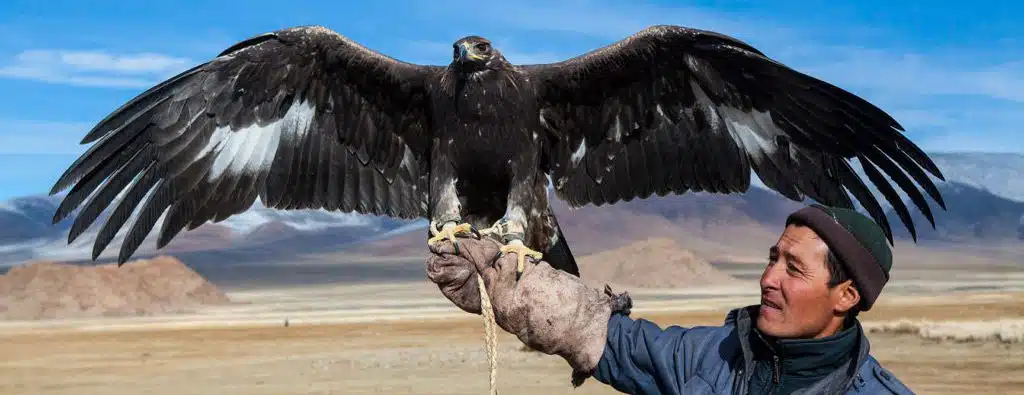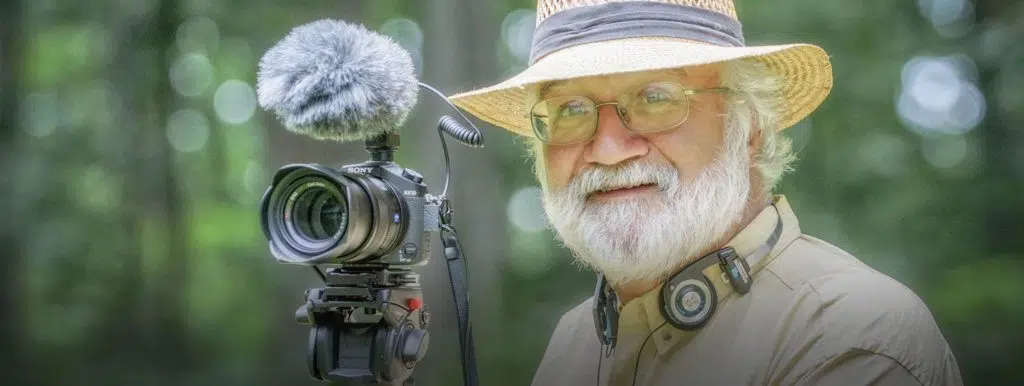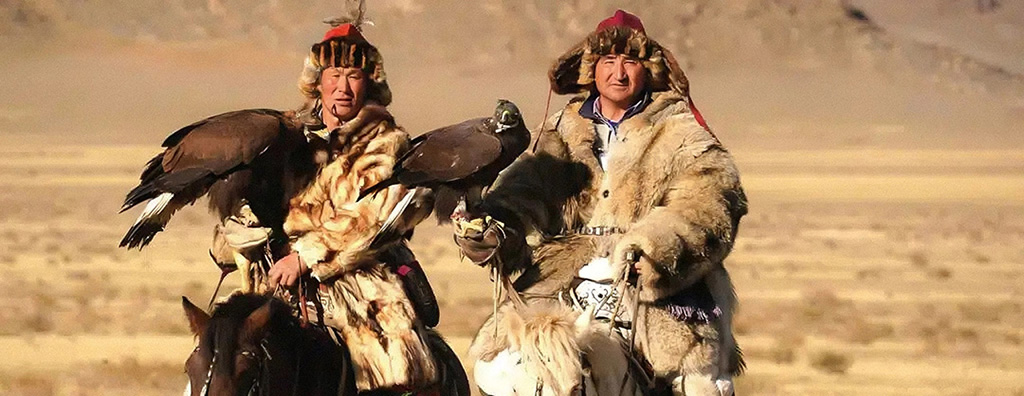Find Yourself a World Away
MONGOLIA
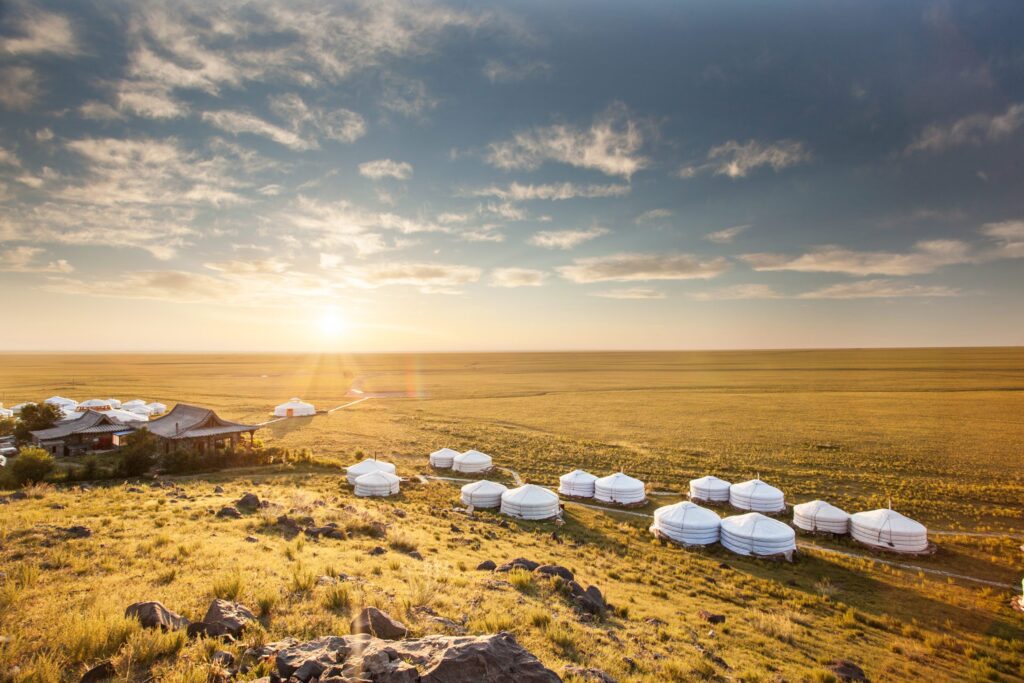
Best time to visit
Capital
Airport

Mongolia
Where the Big Picture Gets Even Bigger
In the terrain of Mongolia’s rugged mountains, vast fertile steppe, and awe-inspiring Gobi Desert—you will find a beauty unique to only the wildest places on Earth.
The preservation of these dynamic landscapes may be owed in part to Mongolia being sealed off from the world for most of the 20th century. Yet the greater factor is that roughly a third of the population lives as nomadic herders, moving several times a year among the lush countryside, and they honor the land by respecting and preserving it—as Mongolian’s have done since the days of Chinggis Khan.
Nomadic Expeditions has been leading world-class tours and journeys throughout Mongolia since 1992, upon the signing of the country’s new democratic constitution—travel spearheaded by our Founder and CEO Jalsa Urubshurow, a pioneer in environmental conservation through sustainable tourism. Our infrastructure and expertise in the country has not only set a path for eco-travel to flourish here, it provides unrivaled authenticity and exclusivity throughout your Mongolia tour adventures.
We present the opportunity to seamlessly explore this land of astonishing marvels in rich detail—camel trekking across seas of hypnotic dunes, riding Mongolian horses in the footsteps of the long-ago Silk Road trade route, paddling the “dark blue pearl” of utterly pristine Lake Hovsgol, beholding the falconry of Kazakh golden eagle hunters who once relied on their birds to capture prey during winter in the Altai Mountains.
Staying in luxuriously appointed traditional gers and meeting local families of Mongolia’s eminently hospitable nomadic people—you will come to know more than a place, but a timeless way of life.
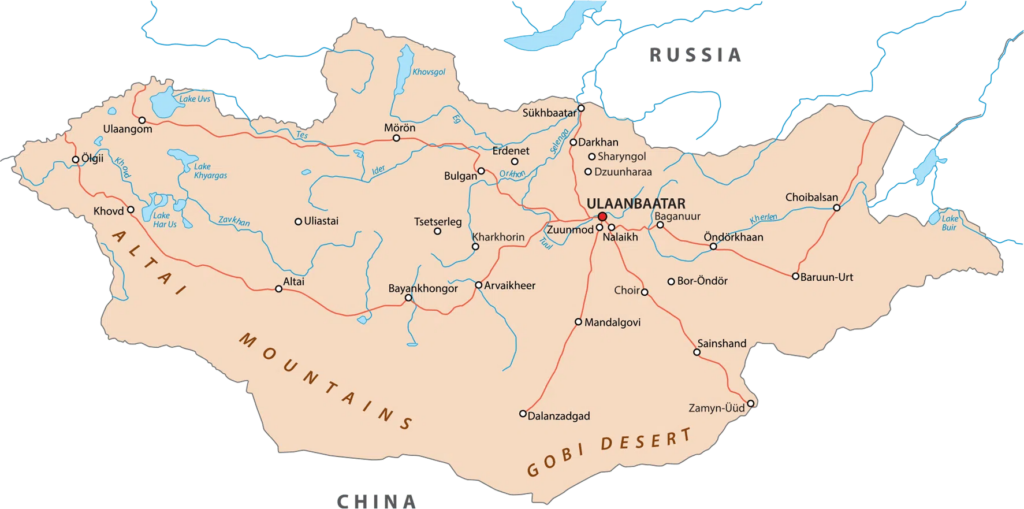
COUNTRY / LOCATION
VISA REQUIREMENTS
LANGUAGES SPOKEN
WEATHER
CURRENCY
EXPLORE OUR MONGOLIA
Group Journeys
FEATURED JOURNEY: August 5 – 17, 2025
Mongolia Exploration
With Michael Klecheski Former U.S. Ambassador to Mongolia
Set out on a rare and enriching journey through Mongolia, exploring both Central Mongolia and the Gobi Desert, hosted by former U.S. Ambassador to Mongolia, Michael Klecheski. This once-in-a-lifetime opportunity provides exclusive access to Mongolia’s cultural, historical, and natural treasures. Travel alongside esteemed experts and engage with influential local artists, historians, and conservationists. Delve into Mongolia’s rich history and heritage, from the rise of the Great Khans to modern conservation efforts.
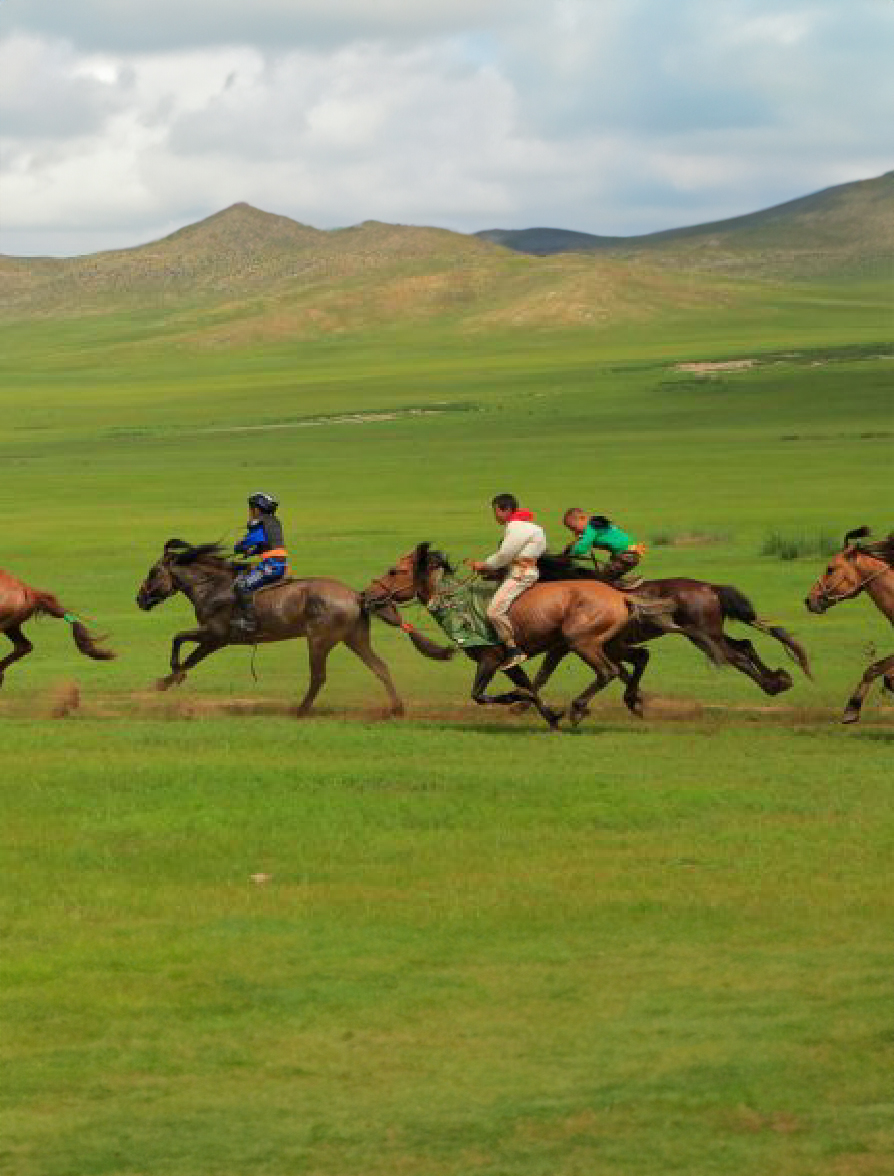
JULY 3-13, 2025
Join Nomadic Expeditions on this classic journey delving into Mongolia’s diverse landscapes, people, and culture. Explore its mountains, forests, and meadows, experiencing the essence of this captivating land.
OCTOBER 1-12, 2025
Golden Eagle Festival & Gobi Desert
Join us amidst the mountains of western Mongolia for the annual Golden Eagle Festival before traveling to the legendary fossil beds of the Gobi on this unique and exciting adventure.
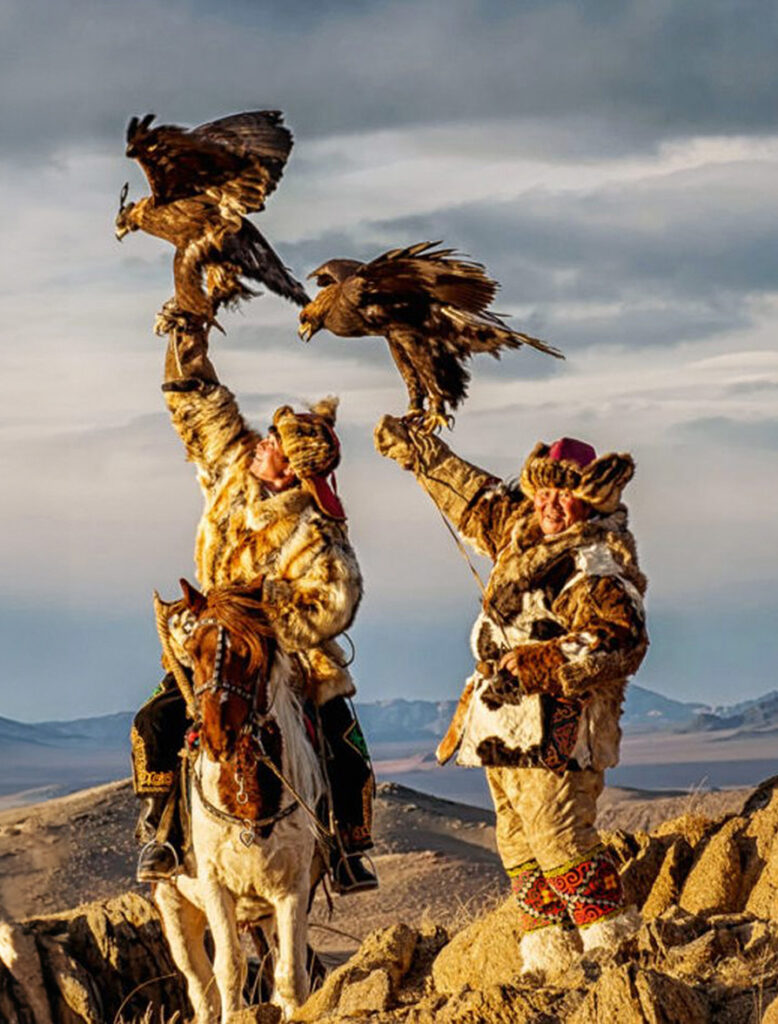
OCTOBER 1-7, 2025
Golden Eagle Festival
Embark on a journey through Mongolia’s ancient and modern contrasts, from Ulaanbaatar’s spiritual heart at Gandan Monastery and the Chinggis Khan Museum’s historical treasures to the cultural immersion at the Golden Eagle Festival in Bayan-Ulgii. Experience the thrill of Kazakh eagle hunters showcasing their centuries-old skills against the stunning backdrop of Tolbo Lake and the Khunguin Mountains, culminating in a celebration of tradition and honor.
JUNE 12-23, 2025 | AUGUST 14-25, 2025
From the Altai Mountains to the Gobi Desert featuring The Naadam Festival
This Mongolian journey intertwines two of Mongolia’s legendary landscapes: the Altai Mountains in the West, inhabited by Kazakh eagle hunters, and the Gobi Desert, a dramatic semi-arid expanse in the south.
OCTOBER 1-12, 2025
Golden Eagle Festival & Gobi Desert
Join us amidst the mountains of western Mongolia for the annual Golden Eagle Festival before traveling to the legendary fossil beds of the Gobi on this unique and exciting adventure.

OCTOBER 1-7, 2025
Golden Eagle Festival
Embark on a journey through Mongolia’s ancient and modern contrasts, from Ulaanbaatar’s spiritual heart at Gandan Monastery and the Chinggis Khan Museum’s historical treasures to the cultural immersion at the Golden Eagle Festival in Bayan-Ulgii. Experience the thrill of Kazakh eagle hunters showcasing their centuries-old skills against the stunning backdrop of Tolbo Lake and the Khunguin Mountains, culminating in a celebration of tradition and honor.
EXPLORE OUR MONGOLIA
Private Journeys
FEATURED JOURNEY : MAY - SEPTEMBER
Mongolian Epic Overland Adventure
This epic off-road adventure showcases some of the most spectacular, varied, and historically important sites in Mongolia. Your journey will traverse the entire country from north to south using four-wheel drive off-road vehicles.
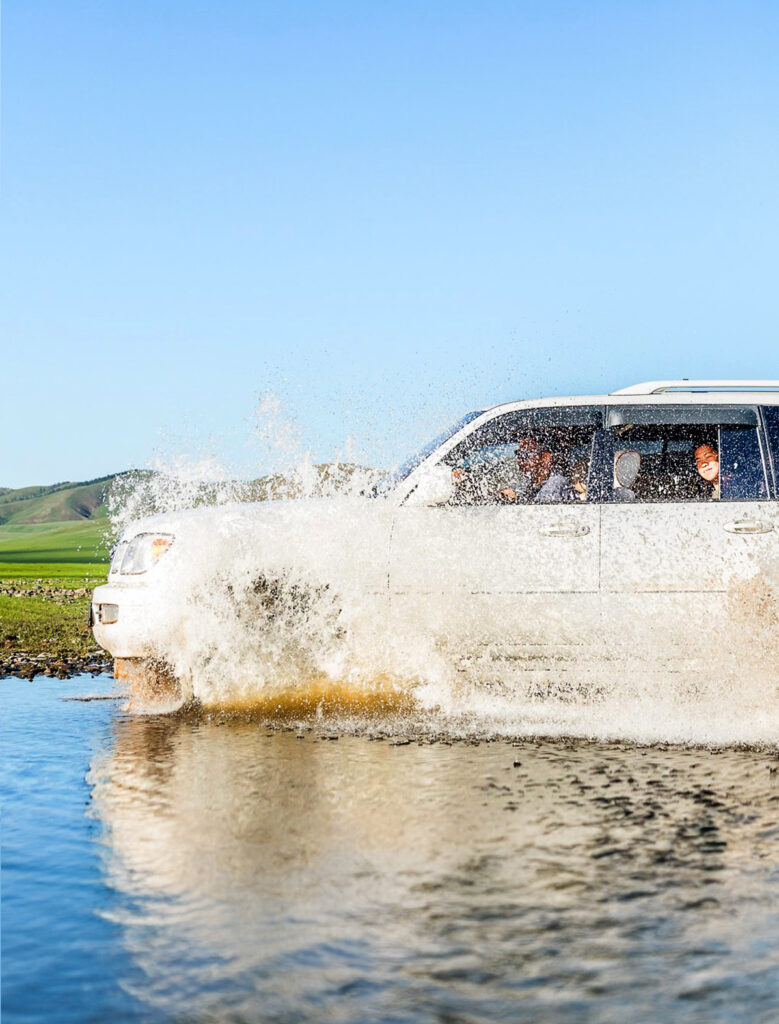
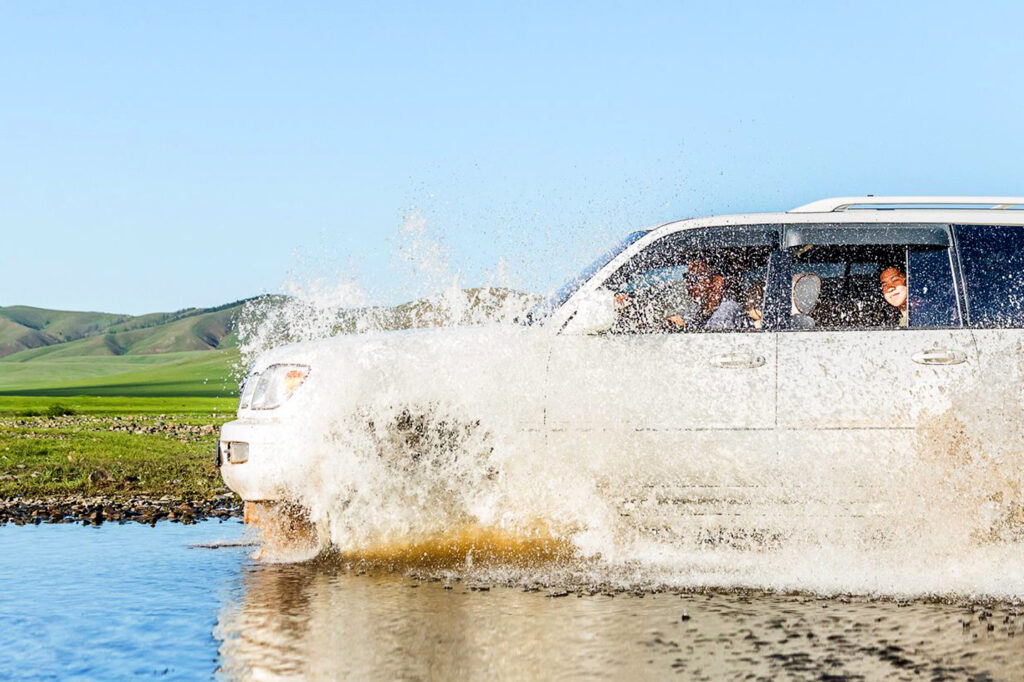
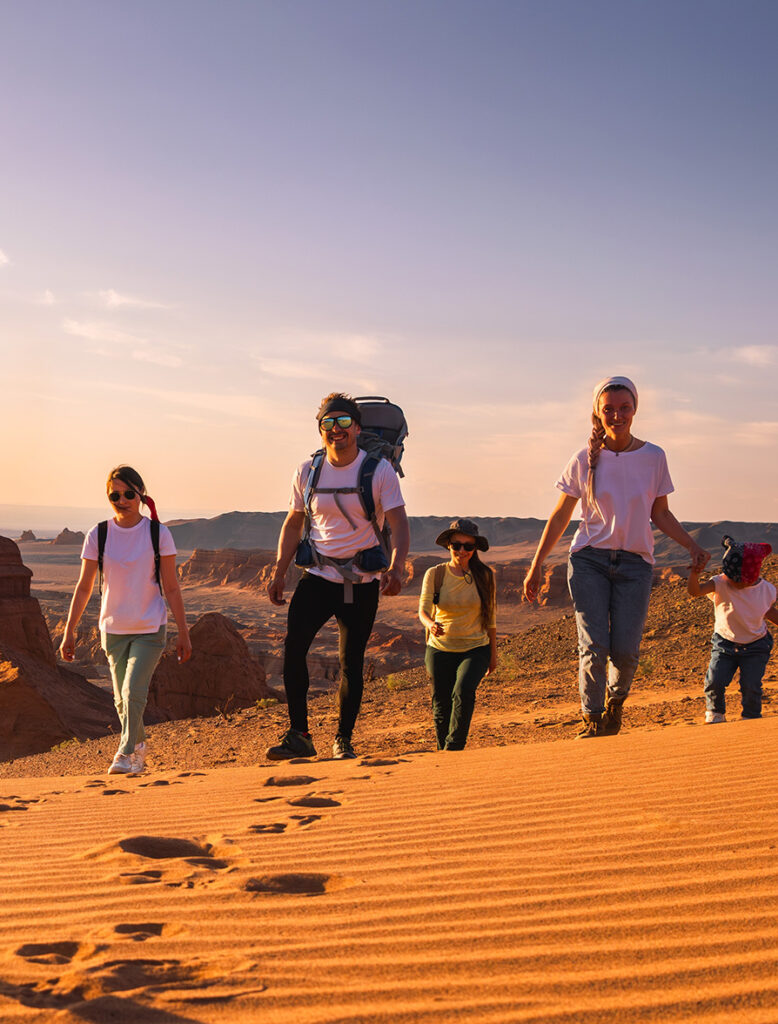
PRIVATE | MAY - OCTOBER
Gobi Desert Mongolia Adventure
Discover our Family Fun journey through Mongolia, where traversing dunes on camelback, mastering archery, and fossil hunting in the Gobi promise unforgettable adventures, enriching cultural encounters, and cherished family memories in a land brimming with wonder.
PRIVATE | MAY - OCTOBER
In the heart of the Gobi, where towering sand dunes meet dramatic canyons and cliffs, this expedition unveils Mongolia’s legendary desert through immersive experiences on foot, camel, and mountain bike, promising awe-inspiring vistas under vast blue skies.
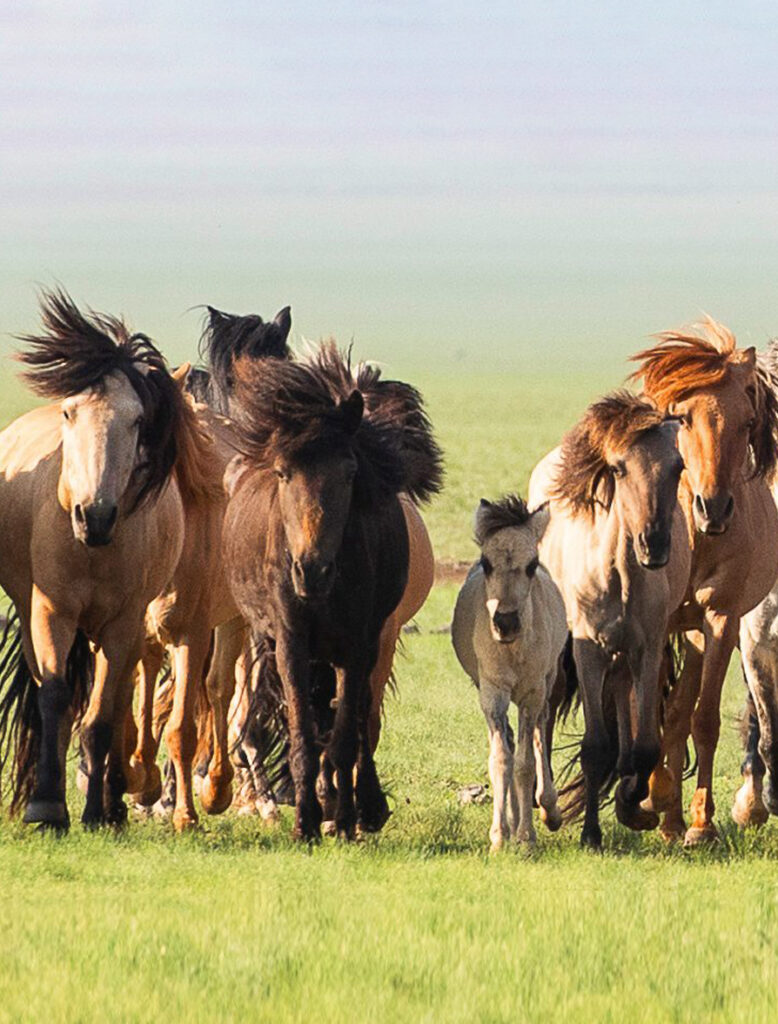
PRIVATE | JUNE - SEPTEMBER
Horseback Riding in Mongolia to the Reindeer People
Designed for the more experienced horseback rider, this horse trek traverses the mountains, taiga forests, and idyllic meadows of Mongolia’s northernmost province, traveling through the beautiful Khoridol Saridag Mountains and leading to Lake Hovsgol, known as Mongolia’s “dark blue pearl.”
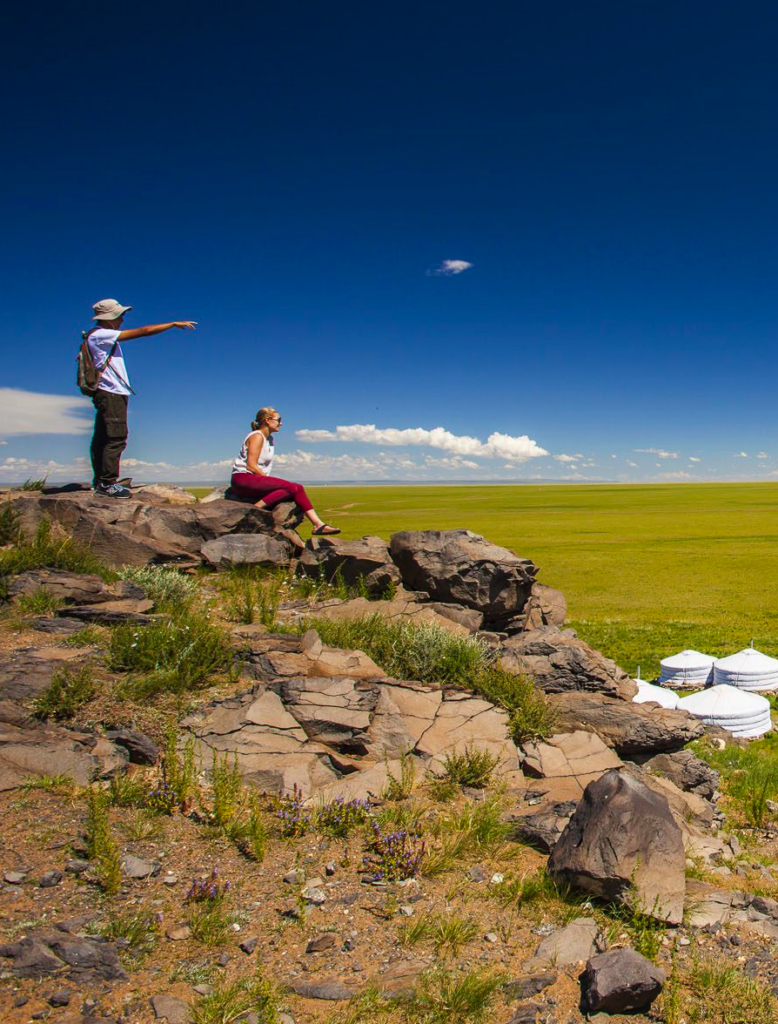
PRIVATE | MAY - OCTOBER
Mongolia Family Adventure
Our Ultimate Family Journey to Mongolia invites you to not just witness, but to fully immerse yourselves in the rich cultural tapestry of this extraordinary land, from mastering traditional crafts to forging deep connections with nomadic life and its timeless traditions.
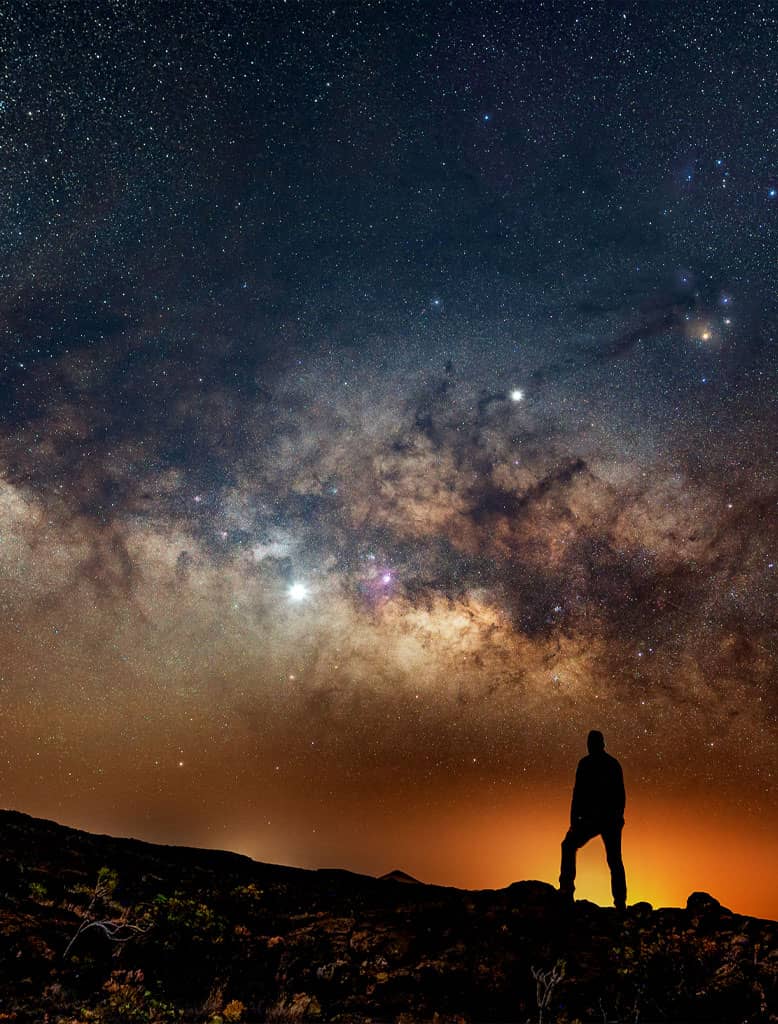
PRIVATE | ON-DEMAND
Grand Traverse of Mongolia
Unleash your wanderlust with the Grand Traverse of Mongolia, an unforgettable 15-day expedition that invites you to explore a land steeped in ancient traditions and stunning landscapes. Traverse breathtaking mountains, witness the artistry of eagle hunters, and delve into the rich history of the Great Khans—all while enjoying the comforts of luxury accommodations and personalized service.

PRIVATE | JANUARY - APRIL
Horseback Riding in Mongolia
Designed for the more experienced horseback rider, this horse trek passes through the mountains, taiga forests, and idyllic meadows of Mongolia’s northernmost province.
TESTIMONIAL
“The Golden Eagle Festival far exceeded our expectations, it was magnificent. The setting, the people, all was a beautiful cultural experience.”
– Juliana J.
RELATED ARTICLES FROM
Our Blog

